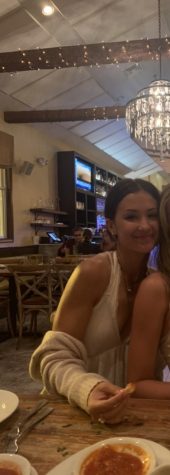Administration says they are “adamant to stay open” through omicron surge
As COVID-19 cases continue to rise after the new omicron variant emerged, students in the West Essex community raise many questions about the administration’s approach to this concern. Although roughly one in four New Jersey schools have closed according to Nj.com, the West Essex school district has not made any attempt to close. To clear up confusion amongst the students and even the faculty who are unsure about the district’s plans we talked to administrators Caesar Diliberto, Kimberly Westervelt and Juliann Hoebee to get more concrete answers about their plans as COVID escalates and what they believe is the most reasonable and beneficial option.
The administration’s plan is simple: to stay open for as long as they can. As of now, doing virtual learning is not an option.
“We’re adamant to stay open, unless we exhaust every possible option,” Diliberto said. “The entire administration is very committed to remaining open for in-person and all extracurricular activities and athletics.”
The administration does not see the outbreak as a threat as of now, and even with an abundance of cases amongst students and faculty, they remain adamant on staying open. Their concerns are more geared towards efficient learning, not so much on people catching COVID.
“More than positive cases, it’s more of a staffing problem,” Diliberto said. “So the threshold for that is more of a moving variable; there’s not like a number.”
Even if staffing shortages were to develop, they are committed to in-person learning.
“We have tried to be really innovative in how we address some of our inevitable staffing shortages, but we’ll do whatever we have to do to try to cover for that staff, for all staff members, but before we close or even adopt a different schedule,” Diliberto said.
As Diliberto said, developing an alternate schedule could be an option if cases get too big. This could include half days in order to avoid eating lunch in the cafeteria. However, administrators do not see that happening in the near future and have faith in the school staying safe.
“I think the students and staff are safe in this building,” Westervelt said. “We have safety measures in place, everyone’s wearing their masks, you’re distanced in the classrooms, like everyone is safe. We have had open lunch for five months now and we have not seen an outbreak in our school, so our data shows that our school is safe.”
Ultimately, going virtual is the administration’s least favorite option, and there are multiple reasons why. One of these reasons is the impact that virtual learning had on students and faculty throughout the pandemic, negatively affecting mental health and learning effectiveness.
“There is no comparison between virtual learning and in-person learning,” Westervelt said. “Last year we had to do what we had to do because of the pandemic, but students need to be in class with their teachers. It is far more beneficial than virtual learning and for students who have just been in a virtual world for a year and a half, it’s time that we transition back into in-person learning.”
Diliberto reiterated and emphasized that he thinks the students enjoy coming into school based on what he’s observed. He also strongly believes that getting out of the house and interacting with the real world is extremely important during these difficult times.
“I think our attendance in the past two weeks actually speaks to how much students do want to come to school,” Diliberto said. “So even at the height of omicron, and when there is access to your classroom from home… and even with that horrible weather, we still had over 80 percent attendance.”
Administration feels that going back to online learning will regress the students both academically and mentally, putting a strain on learning overall. Although some students may have a desire to go virtual, the administration firmly believes that staying in-person is best not only for the students, but for everyone.
“Kids are at the forefront of what we do and we keep them the focus and make sure everything that’s done is in the betterment of kids, always,” Hoebee said.






